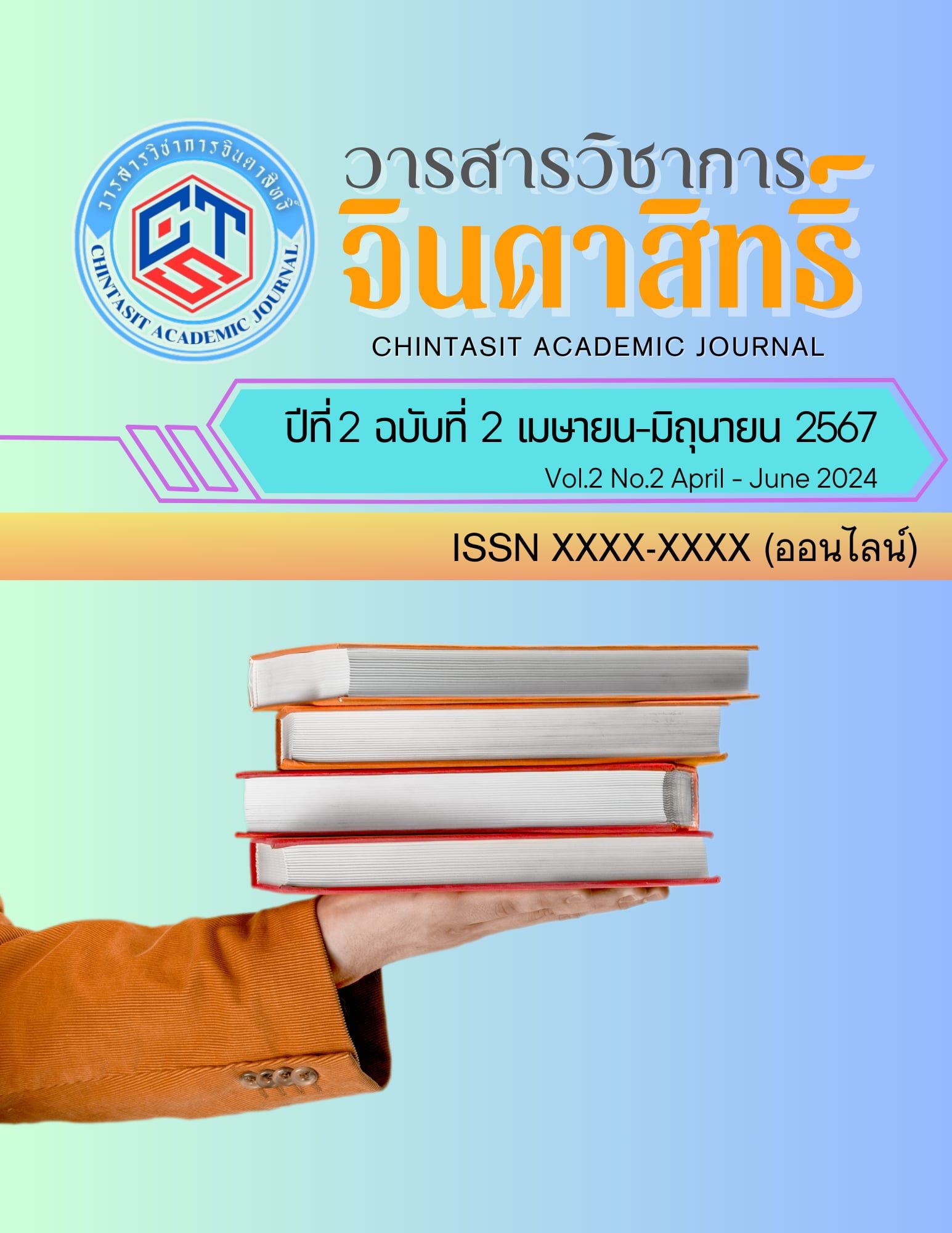The Seven Qualities of a Good Friend (Kalyanamitra) in Educational Leadership for Creating a Learning Society
Main Article Content
Abstract
This article presents the application of the Seven Qualities of a Good Friend (Kalyanamitra) from Buddhism to educational administration to create a quality learning society. The study finds that the seven qualities of Kalyanamitra, namely Piyo (lovable), Garu (respectable), Bhāvanīyo (admirable), Vattā (able to speak effectively), Vacanakkhamo (patient with speech), Gambhīrañca kathaṃ kattā (able to explain profound matters), and No caṭṭhāne niyojaye (not leading in unwholesome ways) can be effectively applied to educational administration. The article analyzes the integration of the Kalyanamitra principle with modern educational administration theories and presents guidelines for application in rapidly changing situations. The results indicate that administrators possessing the seven qualities of Kalyanamitra can build good relationships with personnel, stimulate personal and professional development, and promote an organizational culture conducive to learning, leading to sustainable educational quality development. The integration of Buddhist principles with modern educational administration thus presents a potential approach for developing Thai education in the 21st century.
Article Details

This work is licensed under a Creative Commons Attribution-NonCommercial-NoDerivatives 4.0 International License.
Chintasit Academic Journal is licensed under a Creative Commons Attribution-NonCommercial-NoDerivatives 4.0 International (CC BY-NC-ND 4.0) licence, unless otherwise stated. Please read our Policies page for more information on Open Access copyright and permissions.
References
ทิศนา แขมมณี. (2545). ศาสตร์การสอน: องค์ความรู้เพื่อการจัดกระบวนการเรียนรู้ที่มีประสิทธิภาพ. สำนักพิมพ์แห่งจุฬาลงกรณ์มหาวิทยาลัย.
ธีระ รุญเจริญ. (2550). ความเป็นมืออาชีพในการจัดและบริหารการศึกษายุคปฏิรูปการศึกษา. สำนักพิมพ์ข้าวฟ่าง.
พระธรรมปิฎก (ป.อ. ปยุตฺโต). (2546). พจนานุกรมพุทธศาสตร์ ฉบับประมวลธรรม. โรงพิมพ์มหาจุฬาลงกรณราชวิทยาลัย.
พระพรหมคุณาภรณ์ (ป.อ. ปยุตฺโต). (2559). พจนานุกรมพุทธศาสตร์ ฉบับประมวลธรรม (พิมพ์ครั้งที่ 34). มูลนิธิการศึกษาเพื่อสันติภาพ พระธรรมปิฎก (ป.อ. ปยุตฺโต).
Ainscow, M. (2005). Developing inclusive education systems: What are the levers for change? Journal of Educational Change, 6(2), 109-124.
Bass, B. M., & Steidlmeier, P. (1999). Ethics, character, and authentic transformational leadership behavior. The Leadership Quarterly, 10(2), 181-217.
Brown, M. E., & Treviño, L. K. (2006). Ethical leadership: A review and future directions. The Leadership Quarterly, 17(6), 595-616.
Collaborative for Academic, Social, and Emotional Learning (CASEL). (2020). CASEL's SEL framework: What are the core competence areas and where are they promoted? Retrieved from https://casel.org/sel-framework/
Darling-Hammond, L., Hyler, M. E., & Gardner, M. (2017). Effective teacher professional development. Learning Policy Institute.
DuFour, R., & Eaker, R. (1998). Professional learning communities at work: Best practices for enhancing student achievement. Solution Tree Press.
Elias, M. J., Zins, J. E., Weissberg, R. P., Frey, K. S., Greenberg, M. T., Haynes, N. M., Kessler, R., Schwab-Stone, M. E., & Shriver, T. P. (1997). Promoting social and emotional learning: Guidelines for educators. ASCD.
Epstein, J. L. (2018). School, family, and community partnerships: Preparing educators and improving schools. Routledge.
Fullan, M. (2001). Leading in a culture of change. Jossey-Bass.
Goleman, D., Boyatzis, R., & McKee, A. (2002). Primal leadership: Realizing the power of emotional intelligence. Harvard Business School Press.
Gorski, P. C. (2013). Reaching and teaching students in poverty: Strategies for erasing the opportunity gap. Teachers College Press.
Greenleaf, R. K. (1977). Servant leadership: A journey into the nature of legitimate power and greatness. Paulist Press.
Hallinger, P., & Murphy, J. (1985). Assessing the instructional management behavior of principals. The Elementary School Journal, 86(2), 217-247.
Hargreaves, A., & Fullan, M. (2012). Professional capital: Transforming teaching in every school. Teachers College Press.
Hord, S. M. (1997). Professional learning communities: Communities of continuous inquiry and improvement. Southwest Educational Development Laboratory.
Horn, M. B., & Staker, H. (2014). Blended: Using disruptive innovation to improve schools. Jossey-Bass.
IDEO. (2013). Design thinking for educators toolkit. IDEO LLC.
Kaplan, R. S., & Mikes, A. (2012). Managing risks: A new framework. Harvard Business Review, 90(6), 48-60.
Knight, J. (2007). Instructional coaching: A partnership approach to improving instruction. Corwin Press.
Kotter, J. P. (2012). Leading change. Harvard Business Review Press.
Kouzes, J. M., & Posner, B. Z. (2017). The leadership challenge: How to make extraordinary things happen in organizations (6th ed.). John Wiley & Sons.
Ladson-Billings, G. (1995). Toward a theory of culturally relevant pedagogy. American Educational Research Journal, 32(3), 465-491.
Leithwood, K., Seashore Louis, K., Anderson, S., & Wahlstrom, K. (2004). How leadership influences student learning. The Wallace Foundation.
Marzano, R. J., Waters, T., & McNulty, B. A. (2005). School leadership that works: From research to results. ASCD.
Noddings, N. (2013). Caring: A relational approach to ethics and moral education. University of California Press.
Sanders, M. G. (2003). Community involvement in schools: From concept to practice. Education and Urban Society, 35(2), 161-180.
Senge, P. M. (2006). The fifth discipline: The art and practice of the learning organization. Random House.
Sergiovanni, T. J. (1992). Moral leadership: Getting to the heart of school improvement. Jossey-Bass.
Shapiro, J. P., & Stefkovich, J. A. (2016). Ethical leadership and decision making in education: Applying theoretical perspectives to complex dilemmas. Routledge.
Sheninger, E. (2019). Digital leadership: Changing paradigms for changing times. Corwin Press.
Spillane, J. P. (2006). Distributed leadership. Jossey-Bass.
Trilling, B., & Fadel, C. (2009). 21st century skills: Learning for life in our times. John Wiley & Sons.
United Nations. (2015). Transforming our world: The 2030 agenda for sustainable development. United Nations.


